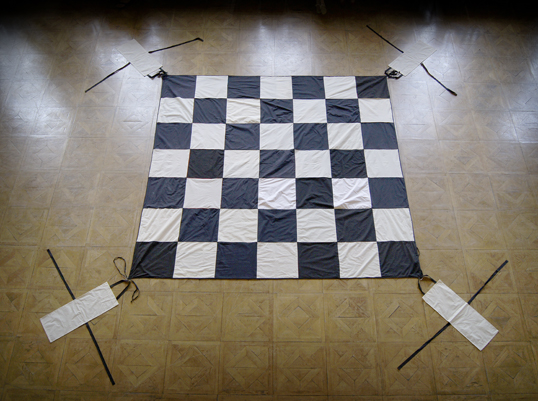'Civitas Munita' was a site-specific artistic project executed in Cracow’s district of Podgórze by the Quadratum Nigrum collective. It was carried out within the 'Sól' project which focuses on the prevention of gentrification processes which is visible in Cracow. 'Sól' – by supporting small shop owners – also refers to the traditional guild structure which was once one of the constituents of urban identity.
The Latin term civitas munita means a fortified town and alludes to the history Cracow’s district of Podgórze which, in fact, never had its own defensive walls. The project’s aim was to symbolically consolidate Podgórze through an attempt at reconstructing the walls which existed only in heraldic images known from Podgórze’s first coat of arms. The element that was supposed to bring the district’s independence back was not an architectural barrier, but a visual identification designed especially for this purpose, which refered to traditional emblems.
Each quarter neighbouring with Rynek Podgórski was marked with colourful flags. Emblems on these flags reflect, on the one hand, abstract forms visible in decorative floors (which constitute firm ground for us and yet stay invisible) of historic houses, on the other hand, to symbols connected with guilds.
Copies of all flags was displayed in the Podgórze town hall in a form of patchwork in which individual fragments were combined into an emblematic chessboard and, at the same time, into a symbolic map of a hypothetical urban organism.
Artists: Mateusz Okoński, Jakub Skoczek, Jakub Woynarowski
Coordination: Monika Grula
Flags made by: Poczwarka (Irena Kalicka, Marta Sala)





















































